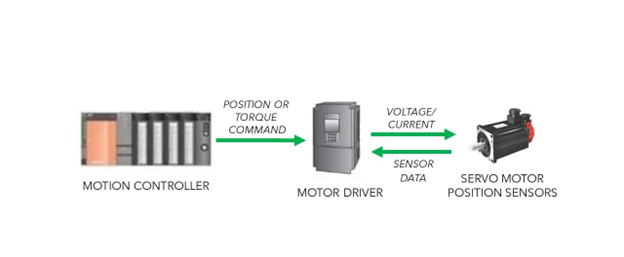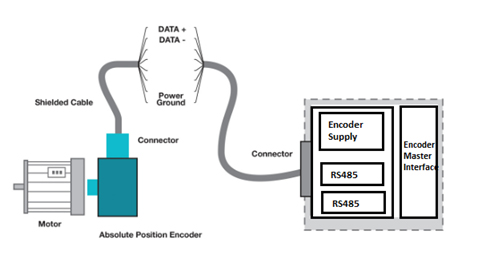How to achieve precise motion control in industrial motor control
Introduction
The demand for precise motion control has reached an all-time high as companies push the frontiers of automation and seek faultless production. Precision motion control in motor systems unlocks unmatched efficiency of industrial output. Fine-tuning and synchronising motions have become indispensable in industrial motor control. However, gaining this degree of control is complex and fraught with difficulties. In this article, we will look at the current scenario, investigate the issues, answer important concerns, and propose novel solutions, giving you a road map to master the art of precise motion control in industrial ecosystems.
Understanding the basics of industrial motor control
A subsystem of an industry automation system is motion control. To complete a sequence of movements, it synchronises and regulates several motors. A multi-axis robotic arm, for example, requires many motors to work in unison to execute a given maneuver. Motion control is mostly utilised for trajectory planning, speed planning, interpolation, and kinematics conversion. Motion control systems are commonly used in printing, packing, and assembly applications.
A motion control system generally comprises of the following key components, as illustrated below:
- A motion controller that generates trajectory planning and then provides control commands to motor drivers
- Motor drivers that convert the control commands from the motion controller (usually a speed or torque signal) into a higher power voltage or current signal to drive the motors
- Motors that execute movement according to control commands
- Position sensors that provide the position/speed data of the motor rotor to the position/speed controller to achieve the precision position/speed control

Figure 1: The motion controller in a system's function is to synchronise and control several motors to complete a series of motions
Motor control vs. motion control
Motor control, on the other hand, is a method or approach that is primarily focused on regulating the motor's spinning. A typical motor control system modifies one or more of the torque, speed, and position parameters of a single motor to achieve the desired values. The requirements and strategies for driving a motor might vary substantially depending upon its type. A motor controller frequently lacks planning abilities; advanced drivers can only plan for position and speed. As a result, the following is a straightforward explanation of the distinction between motor control and motion control:

Figure 2: In a system, the interplay between motion controllers and motor controllers
Given the distinctions between the two systems, it is evident that the design needs or resources for both are also considerably different.
Motor control is primarily concerned with making the motor spin properly or, more specifically, with communication. To do this, the motor controller must communicate with a number of sensors, interpret both analog and digital inputs, and generate waveforms to operate the motor. This occurs in a very small time loop ranging from 50us to 300us.
Motion control, on the other hand, frequently serves as a system supervisor, necessitating communication between several motor controllers as well as data through Ethernet (EtherCAT and TSN), CAN, RS485, and orders from a human-machine interface (HMI) panel. As previously stated, a motion controller may also participate in motor control activities such as controlling the speed loop, position loop, or torque loop. As a result, the real-time control loop of a motion controller can range from 100us to hundreds of milliseconds, depending upon the actual duties performed by the motion controller.
Factors affecting precision in industrial motor control
Precision motion control can't be achieved without precise position and speed sensing. Sensors can detect motor shaft angular position, speed, conveyor linear position and speed. Designers frequently use incremental optical encoders with a few hundred to a thousand slots per rotation to sense position and speed. These encoders frequently connect to a microcontroller (MCU) through quadrature-encoded pulses (QEPs), requiring QEP interface capability.
Absolute encoders with significantly higher accuracy often have substantially greater slots per revolution and are precisely placed to provide the absolute angular position. The identified position is transformed into a digital representation and encoded in accordance with industry standards. Until recently, you would have needed field-programmable gate arrays (FPGAs) to interface with such encoders, but as illustrated in Figure 3, it is now typical for microcontrollers (MCUs) to have the same capabilities. Such as Serial Peripheral Interface (SPI), universal asynchronous receiver transmitter (UART), or Controller Area Networks (CAN), they frequently necessitate customisable logic blocks or proprietary processing units.

Figure 3: An absolute encoder interfaced with a microcontroller
Implementing precise motion control
In order to execute motion control profiles and algorithms in a precise motion control system, MCUs with significant processing capability are required. Such MCUs are generally 32 bits in word length, with native 64-bit floating-point functionality in order to provide the required precision and accuracy. Many MCUs feature hardware accelerators because algorithms rely extensively on trigonometric, logarithmic, and exponential computations. Because this is a real-time control application, the overall latency of the whole signal chain - from collecting current, voltage, position, and speed measurements to updating control outputs - directly influences control performance, which can impact precision. Some MCUs have on-chip analog comparators that directly generate control actions, lowering latency and CPU demands significantly. Fast interrupt response, as well as context storage and restoration, are important.
Having a significant amount of processing power doesn't seem enough. Common control peripherals such as 12- and 16-bit analog-to-digital converters, QEP interfaces, high-resolution edge, pulse capture, and pulse-width modulated (PWM) outputs are also required for motion control MCUs. It is also necessary to be able to build custom logic and timing sequences.

Figure 4: A control MCU for an industrial drive is depicted conceptually
Power devices and drivers are required to deliver the intended control action, which is often in the form of PWM with the duty ratio indicating the action. PWM pulses must be precisely controlled, which implies that drivers must give the required drive strength with minimal temporal skew; power devices must switch on and off at the precise intended moment. Today, such drivers are commonly available, with features such as as overcurrent and overtemperature safety. The most recent wide-bandgap power devices can ensure rapid and precise turn-on and turn-off time. Wide-bandgap devices' rapid switching speed and minimal switching loss enable fast control loop speeds for improved stability and performance. Many applications demand inadequate motor control solutions in addition to precision, necessitating drivers with integrated current sensing and power modules.
Farnell has partnered with many different suppliers catering to a wide range of sensing and communication protocol components portfolio, such as Motion Sensors & Position Sensors, Encoders & Accessories, Microcontrollers, FPGA / CPLD, Drivers & Interfaces, UART Interfaces, Serial Device Servers , Converters / Interfaces, Ethernet Switches / Modules , Communications & Networking Modules, Interface Modules, Memory Cards & Modules, RS232, RS485, RS422 Drivers / Transmitters, RS232, RS485, RS422 Isolated Transceivers, UART






